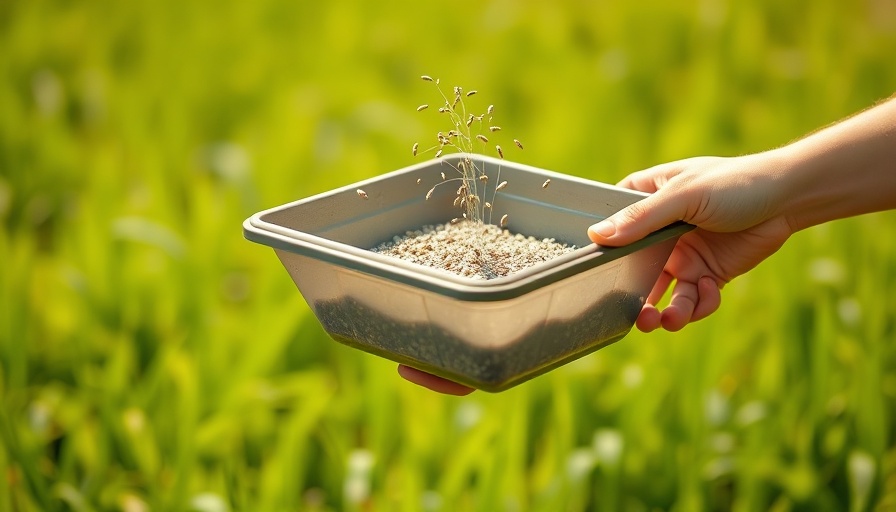
Understanding Grass Seed Viability: Why It Matters
If you're aiming for a lush, green lawn or a pristine athletic field, the quality of your grass seed is essential. Grass seed does not have an infinite lifespan, and knowing the reasons behind its degradation can save you time and efforts when it comes to planting. Grass seed is a living organism, and, like all living things, it can go bad if not handled correctly.
Factors Influencing Seed Health
The longevity of grass seed can be dictated by a variety of factors, including temperature, humidity, and proper storage conditions. According to turfgrass specialist Michael Fidanza from Pennsylvania State University, storing seeds in a warm and humid environment can lead to overheating and a failure to germinate. This highlights the importance of maintaining a cool, dry, and dark storage area—conditions that many grass seed producers strive for, particularly in regions like Oregon known for their optimal seed production practices.
Identifying Bad Seeds: The Warning Signs
It’s crucial to evaluate the grass seed you're considering before planting. Visual cues can include the presence of mold or signs of insect infestation, often indicated through holes or droppings in the seed bag. Additionally, a test date on the bag can help gauge how old the seed is, as older seeds have a higher probability of being non-viable. This is where consulting experts or utilizing resources like the Oregon State University Seed Laboratory can provide valuable insight into seed health.
Protecting Your Investment: Tips for Better Storage
To preserve your grass seed, follow key storage principles. According to findings from Oregon State University, storing seeds at a moisture level lower than 13% is imperative to prolong their life. The combination of low temperatures and relative humidity also plays a crucial role; ideally, these should stay below 60% for optimal seed preservation. For DIY enthusiasts, knowing these storage parameters can help save money and prevent wasted resources.
Step-by-Step Care: Best Practices for Seed Storage
Implementing best practices can significantly enhance the lifespan of your grass seed. Start by keeping seeds in a tight, sealed container away from light and moisture. Regularly monitor moisture levels and use hygrometers to check ambient humidity in the storage area. Moreover, a periodic viability test, especially before planting, will give you peace of mind regarding your seed's potential.
Conclusion: Ensure a Thriving Lawn
By being diligent about the quality and storage of your grass seed, you not only enrich your gardening experience but also help ensure a vibrant lawn or athletic field capable of withstanding the wear and tear of seasonal changes. Investing in quality storage and knowledge about seed health will ultimately lead to less frustration and more satisfaction in your gardening endeavors.
 Add Row
Add Row  Add
Add 




Write A Comment